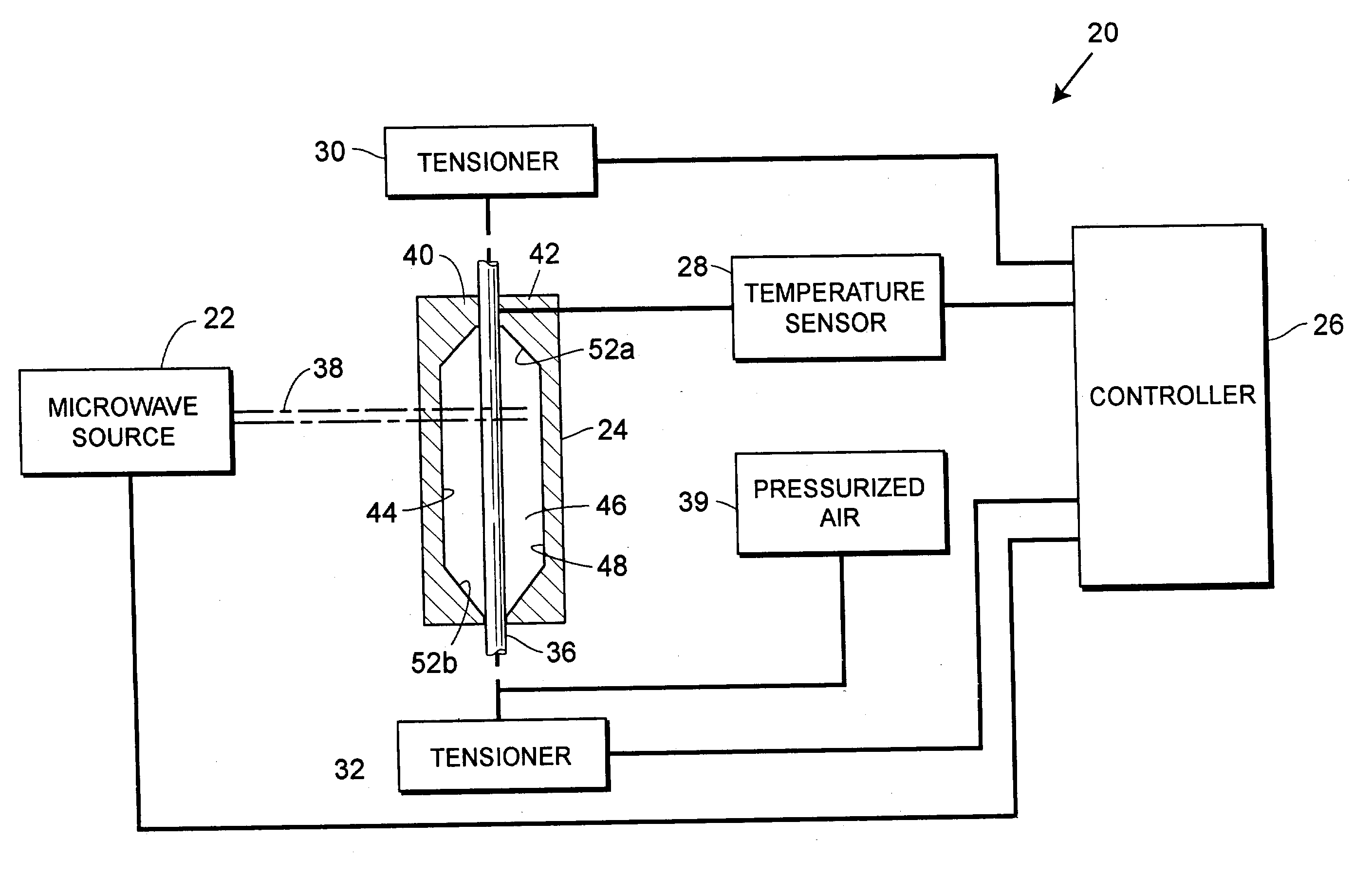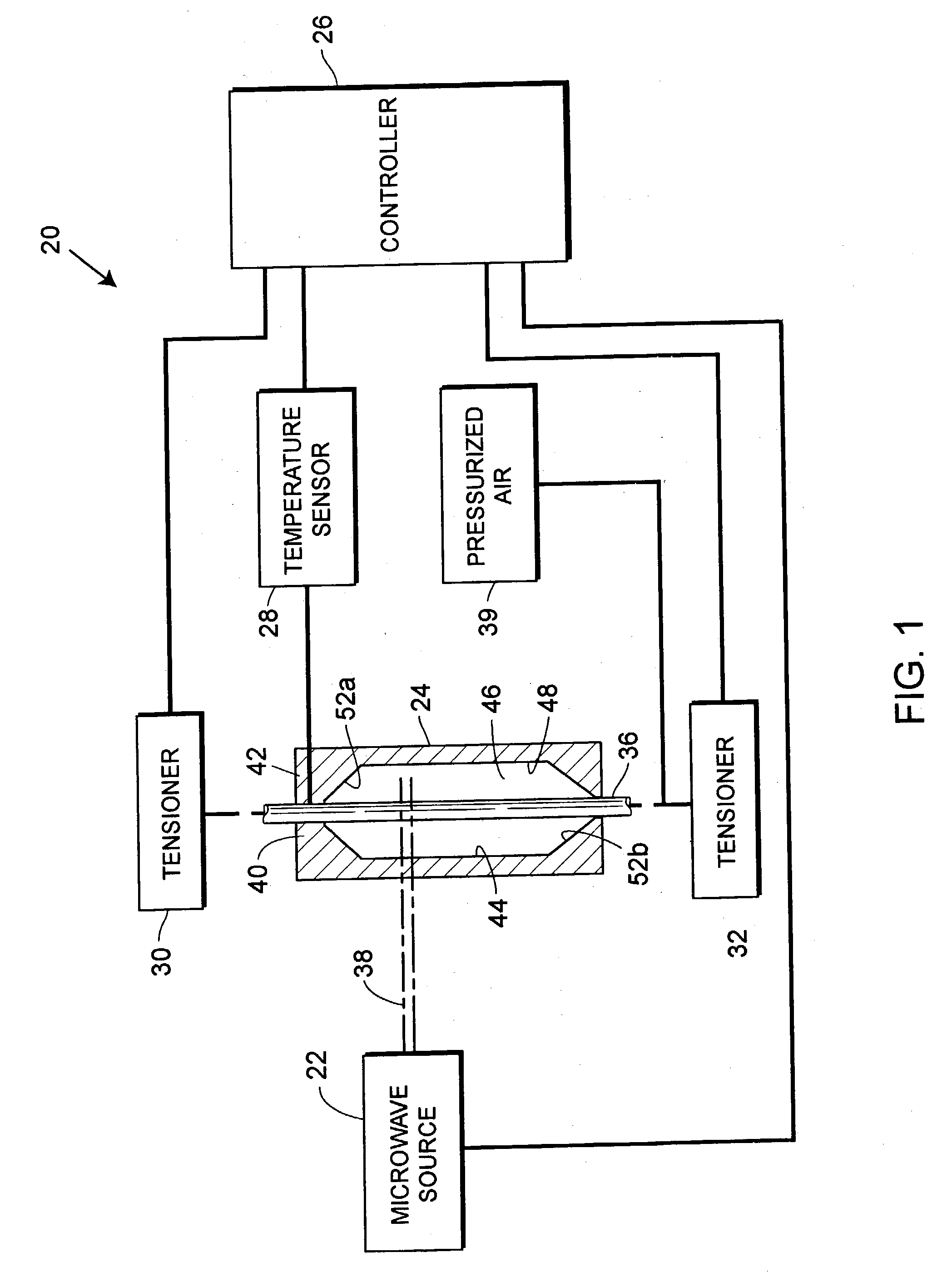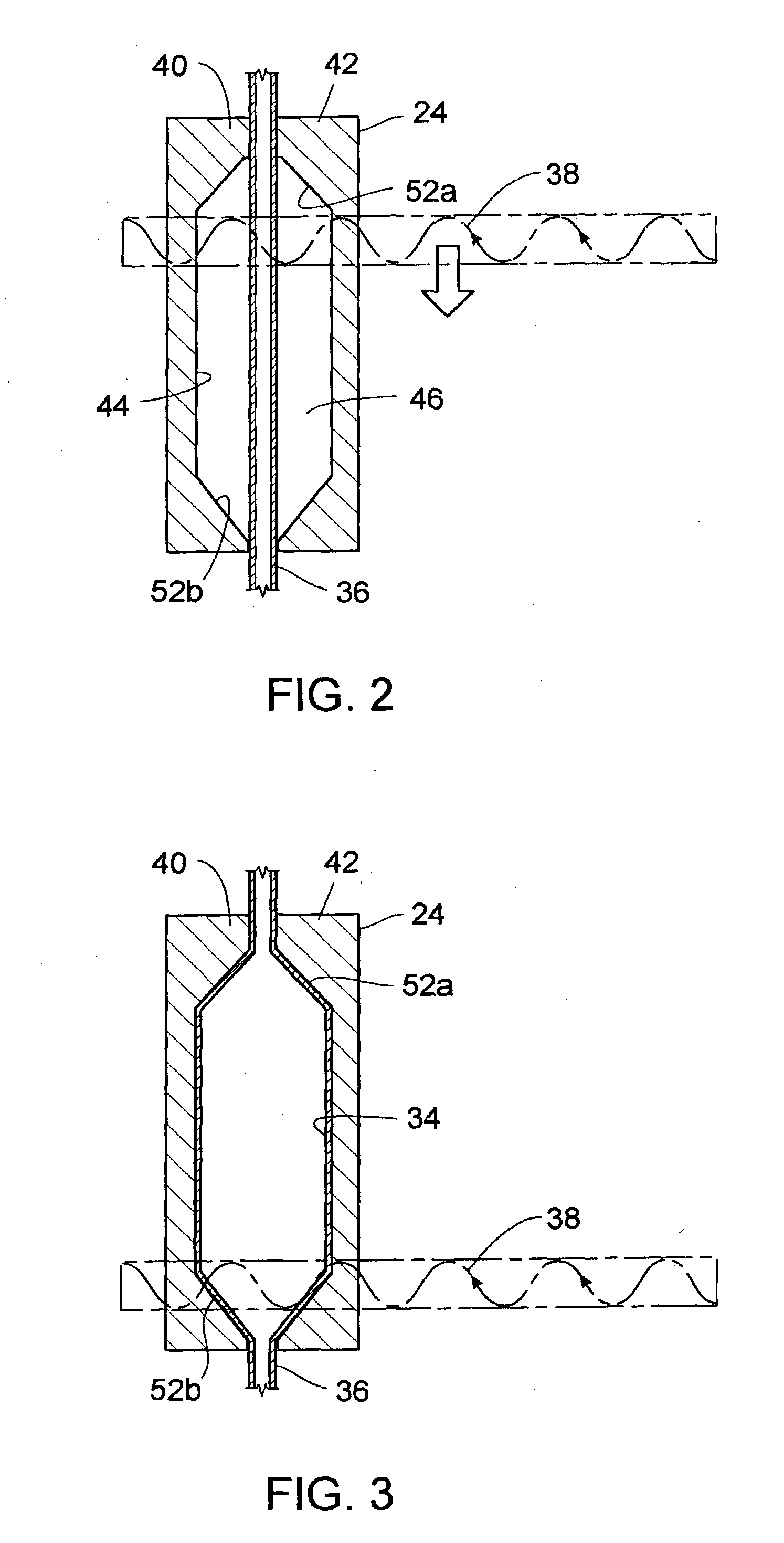Method and apparatus for extruding polymers employing microwave energy
- Summary
- Abstract
- Description
- Claims
- Application Information
AI Technical Summary
Benefits of technology
Problems solved by technology
Method used
Image
Examples
Embodiment Construction
[0053] Referring now to the drawings, wherein like reference numerals indicate corresponding elements, and with specific reference to FIG. 1, a balloon catheter molding apparatus, constructed in accordance with the teachings of the disclosure, is generally referred to by reference numeral 20. As described herein, the apparatus 20 may be advantageously employed for the manufacture of balloon catheters and angioplasty balloons, but can be employed in conjunction with many other types of polymeric devices including, but not limited to, other medical devices or components of medical devices, such as contact lenses, graft material, hub mainfolds and the like.
[0054] Referring again to FIG. 1, the system 20 may include a source of microwave energy 22, a mold 24, a controller or processor 26, a temperature sensor 28 and first and second tensioners 30, 32. Employing such elements, the apparatus 20 can form a balloon 34 (see FIG. 3) from a workpiece or parison 36. More specifically, the paris...
PUM
| Property | Measurement | Unit |
|---|---|---|
| Frequency | aaaaa | aaaaa |
| Frequency | aaaaa | aaaaa |
| Frequency | aaaaa | aaaaa |
Abstract
Description
Claims
Application Information
 Login to View More
Login to View More - R&D
- Intellectual Property
- Life Sciences
- Materials
- Tech Scout
- Unparalleled Data Quality
- Higher Quality Content
- 60% Fewer Hallucinations
Browse by: Latest US Patents, China's latest patents, Technical Efficacy Thesaurus, Application Domain, Technology Topic, Popular Technical Reports.
© 2025 PatSnap. All rights reserved.Legal|Privacy policy|Modern Slavery Act Transparency Statement|Sitemap|About US| Contact US: help@patsnap.com



